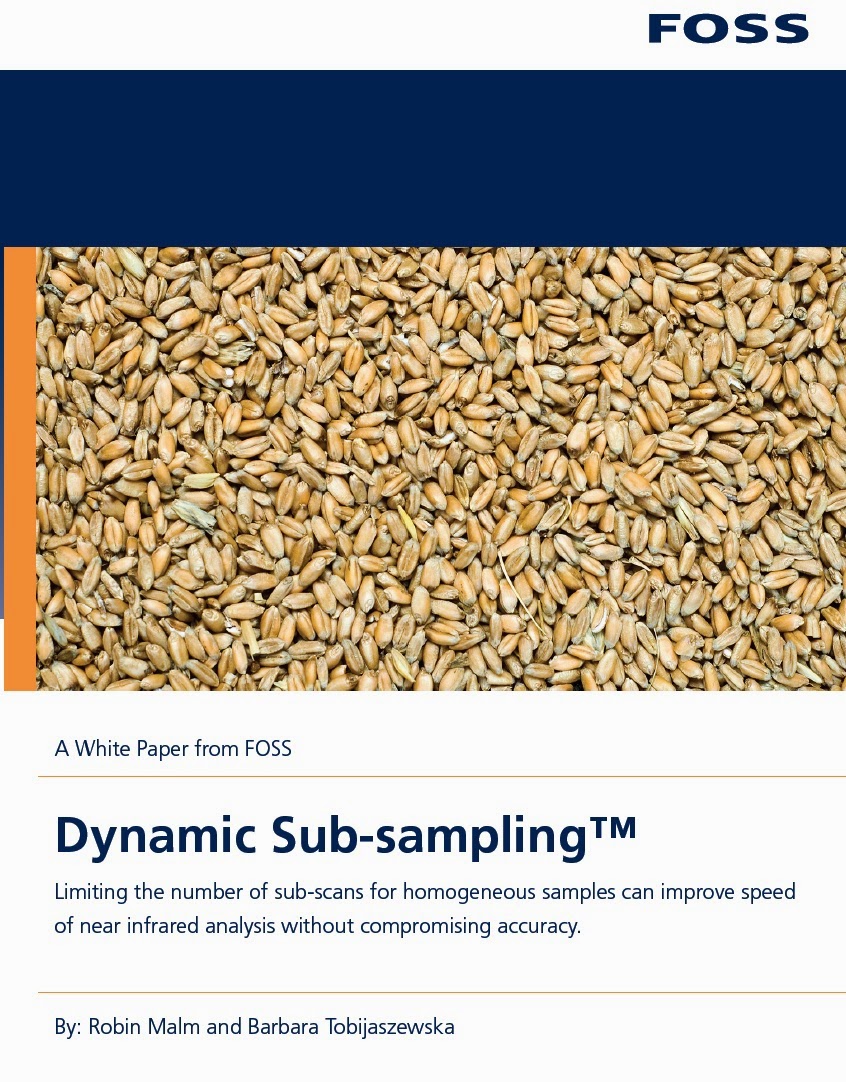The use of Near Infra-red transmittance analysis techniques, as used by the FOSS Infratec™ 1241, has become a standard for whole grain analysis at the point of receival.
One key to the success of this technique has been the speed of the analysis allowing a sample to be analysed in around one minute. A second success factor has been the ability to analyse a relatively large sample compared to alternative techniques. This is achieved through analysis of multiple sub-samples combined with mathematical averaging of results to provide a robust prediction of the results.
Increasing the number of sub-samples has been shown to improve the repeatability of a measurement.
Conversely, reducing the number can have the opposite effect. In other words, the effect of sub-sampling with homogeneous samples is negligible whereas with inhomogeneous samples, the sub-sampling is critical.
Speed remains a critical element of efficient grain receival and any gains that can be made can improve overall efficiency of the operation. With sub-sampling being one of the contributors to overall analysis time, the opportunity to reduce these where possible - without impacting accuracy - is a useful improvement that can add value to a grain company.
Read more HERE.
One key to the success of this technique has been the speed of the analysis allowing a sample to be analysed in around one minute. A second success factor has been the ability to analyse a relatively large sample compared to alternative techniques. This is achieved through analysis of multiple sub-samples combined with mathematical averaging of results to provide a robust prediction of the results.
Increasing the number of sub-samples has been shown to improve the repeatability of a measurement.
Conversely, reducing the number can have the opposite effect. In other words, the effect of sub-sampling with homogeneous samples is negligible whereas with inhomogeneous samples, the sub-sampling is critical.
Speed remains a critical element of efficient grain receival and any gains that can be made can improve overall efficiency of the operation. With sub-sampling being one of the contributors to overall analysis time, the opportunity to reduce these where possible - without impacting accuracy - is a useful improvement that can add value to a grain company.
Read more HERE.
The Global Miller
This blog is maintained by The Global Miller staff and is supported by the magazine GFMT
which is published by Perendale Publishers Limited.
For additional daily news from milling around the world: global-milling.com



No comments:
Post a Comment